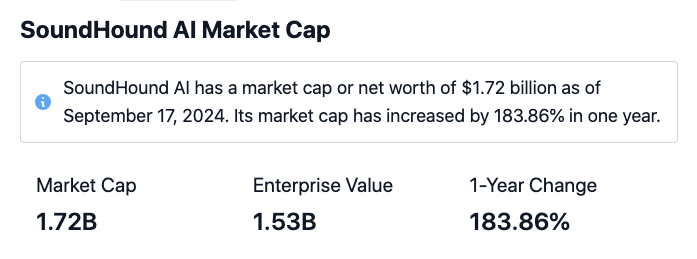20 New Ideas For Deciding On Best Stock Advisor Websites
20 New Ideas For Deciding On Best Stock Advisor Websites
Blog Article
Top 10 Tips To Help You Determine The Costs And Prices Of Ai Trading Platforms That Forecast Or Analyze Stock Prices.
Pricing and cost of AI-powered stock prediction and analysis platforms is essential to avoid unexpected expenses or hidden charges. Understanding the price structure is crucial to making an informed choice. These are the top 10 suggestions for evaluating cost and pricing:
1. Learn about the pricing model
Subscription-based platforms: Find out whether you are required to pay a monthly or yearly cost. Find out what features are included in each level.
Pay-per-use : Confirm that the platform charges according to the amount of usage (e.g. transactions, requests for information or forecasts).
Freemium model: Check whether there's a free version that has limited features and a paid version for the premium features.
2. Compare Pricing Tiers
Compare features across each pricing level (e.g. basic, professional).
Scalability: Make sure that the pricing tiers align with your requirements, whether you're an individual trader a professional, or part of an institution.
Upgrade flexibility: Check whether it's possible to upgrade or lower the plan when you alter your needs.
3. Evaluate Hidden Costs
Data fees: Check for any additional fees for premium data (e.g. real-time data or advanced analytics).
Brokerage fees: Check if there are any additional charges for the platform to integrate with brokers or trades.
API usage - Determine if there are additional costs associated with API access and/or high-frequency usage.
4. Demos and Free Trials
Trial period: Look for websites that provide an opportunity to try a trial or demo to test their features before committing.
Be sure to check the limitations of the free trial. It may not have all features.
Choice of no-commitment: Be sure that you are able to cancel your trial at any time if it doesn't fit your needs.
5. Check for Discounts and Promotions
Discounts on annual subscriptions: Compare the monthly plan against an annual subscription.
Referral programs - Check to see whether there are any discounts or credits for referring new users.
Prices for institutions If you're part of an organization which is larger, inquire about bulk pricing or institutional pricing.
6. How to Evaluate Return on investment (ROI).
Cost vs. Value: Decide if the features and predictions of the platform are worth its cost. Are you able to save time or make better choices in trading?
Performance track record: Research the platform's performance rate or user reviews to assess its potential ROI.
Costs of other platforms: compared the costs of the platform against the cost of making use of it (e.g. missing opportunities, manual analyses time).
Review Cancellation & Refund Policies
Conditions of cancellation: Make sure you are able to make a cancellation without hidden costs or penalties.
Refund policy Check whether the platform will reimburse the amount you paid for.
Auto-renewal: Verify if the platform automatically renews your account and the best way to opt out.
8. Examine Transparency of Pricing
Clear pricing page - Make sure there are no extra charges on the pricing page.
Support for customers: Contact customer support to discuss any pricing ambiguities or any additional charges.
Contract terms: Ensure you are aware of the terms of service and any penalty.
9. Compare your competitors
Comparison of features Comparing the prices and features offered by the platform with the competition to ensure that you're getting the best deal.
User reviews: Read reviews from users to determine if others feel the platform is worth the investment.
Market positioning: Find out whether your platform is advertised as a mid-tier, budget or premium alternative. Also, make sure the cost is comparable to your expectations.
10. Evaluate Long-Term Costs
Price increases Look through the history of the platform to determine the frequency of raising prices.
Updates to features: See if your current plan includes new features or needs an upgrade.
Scalability cost The platform needs to be priced appropriately as your trading activities or data requirements increase.
Bonus Tips
Test different platforms. You can test a variety of platforms for free and compare them.
Offer prices to negotiate: If you have a lot of customers or are part of an organization, ask for special pricing and discounts.
Search for educational tools that are free and resources. Some platforms provide tools for education or resources that are free.
Following these tips can help you evaluate the pricing and costs of AI software for predicting and analyzing stocks. You will be able choose one that suits your budget while delivering the features you need. A balanced platform can offer you the best of both worlds in terms of affordability and functional. Have a look at the top rated his explanation on stocks ai for site tips including best stock advisor, ai investment app, chart ai trading, best ai stock, trading ai, best ai trading software, ai stock trading, trading chart ai, best ai stock trading bot free, best ai etf and more.
Top 10 Tips For Evaluating The Scalability Of Ai Analysis And Stock Prediction Platforms
To ensure AI-driven stock trading and prediction platforms are scalable, they must be able to cope with the ever-growing volume of data and the increasing complexity in markets, as well as customer demands. Here are the top 10 methods to evaluate the scalability.
1. Evaluate Data Handling Capacity
Make sure that your platform is able to analyze or process large data sets.
Why? Scalable platforms should be able handle growing data volumes with no performance degradation.
2. Test the Real-Time Processing Capabilities
Tips: Check how the platform handles live data streams, like live stock prices or breaking news.
Why: The real-time analysis of trading decisions is vital since delays can cause to you missing out on opportunities.
3. Cloud Infrastructure Elasticity and Check
Tip: Determine whether the platform is cloud-based infrastructure (e.g., AWS, Google Cloud, Azure) and can scale resources dynamically.
The reason: Cloud platform elasticity allows the size of the system to alter based on the use.
4. Algorithm Efficiency
TIP: Check the computational efficacy (e.g. deep-learning and reinforcement learning) of the AI models used for prediction.
Reason: Complex algorithms are resource-intensive. Thus optimizing them can help you scale.
5. Find out more about Parallel Processing and Distributed Computer Systems.
Tip: Verify if the platform uses the frameworks of parallel processing or distributed computing frameworks.
The reason: These technologies enable more efficient data processing and analysis across multiple nodes.
Examine API Integration. API Integration.
Tip Check the platform's capability to integrate with external APIs (e.g., brokerage APIs, market data providers APIs).
The reason: seamless platform integration allows it to adjust to new data sources or trading environments.
7. Analyze User Load Handling
Utilize a high-traffic simulator to test how the platform reacts under pressure.
Why: Scalable platforms should deliver the same quality of service regardless of how many users there are.
8. Assessment of Model Retraining and adaptability
Tip: Assess how frequently and efficiently the AI models are trained with new data.
The reason: Markets change, and models have to change quickly to ensure the accuracy.
9. Verify fault tolerance and redundancy
Tips: Make sure that the platform includes failover mechanisms and redundancy in case of hardware or software failures.
Since the cost of downtime in the trading industry, fault tolerance is crucial for scalability.
10. Monitor Cost Efficiency
Tip: Consider the cost of scaling your platform. Be aware of cloud resources such as storage for data and computing power.
What is the reason: The expense of scalability should not be unsustainable. Therefore, it is crucial to find a balance between performance and cost.
Bonus Tip Future-Proofing
Make sure the platform is able to incorporate advanced technologies (e.g. quantum computing, advanced NLP), and is able to adjust to regulatory changes.
These factors can assist you in assessing the impact of AI-powered stock prediction systems and trade platforms. They will also ensure they're robust efficient, reliable capable of expansion and are future-proof. Have a look at the best related site about ai stock picks for website info including ai hedge fund outperforms market, best ai trading app, ai based trading platform, best ai stock, best stock analysis app, best stock advisor, ai hedge fund outperforms market, free ai trading bot, trader ai, ai investment advisor and more.